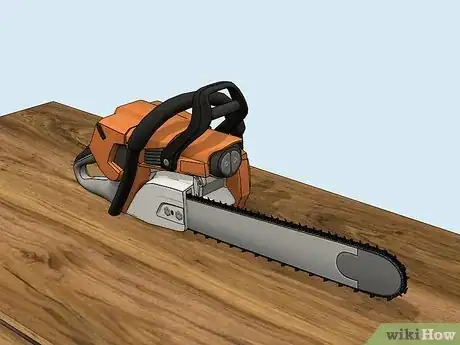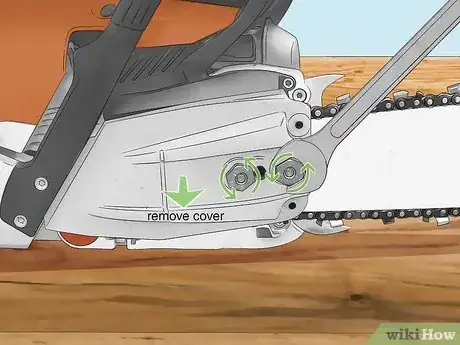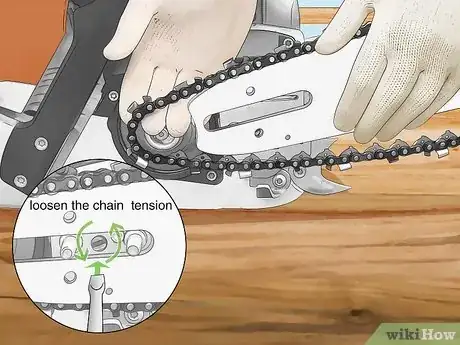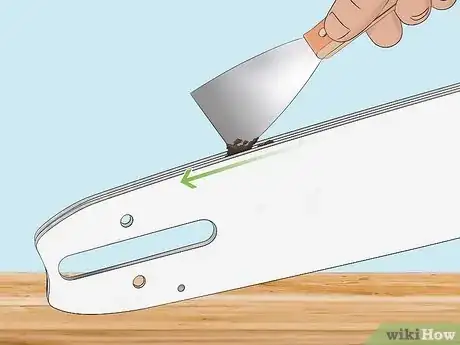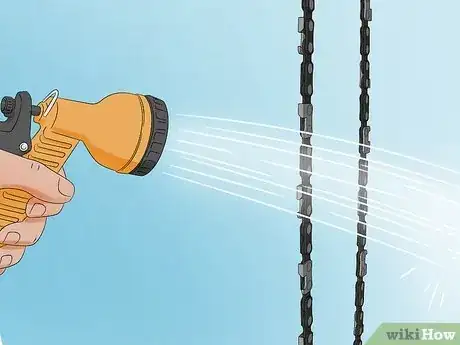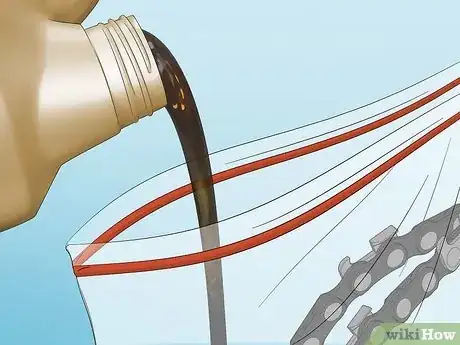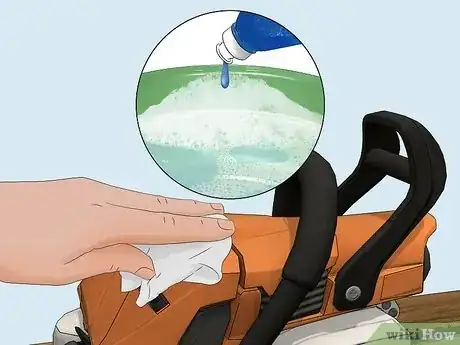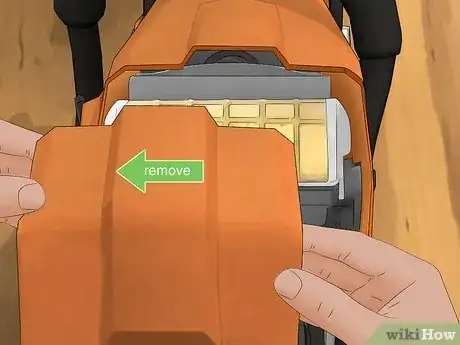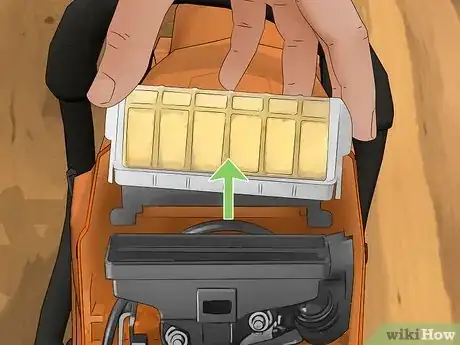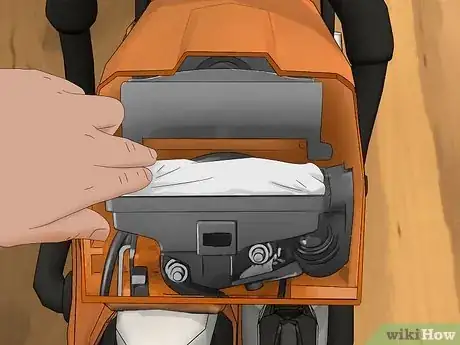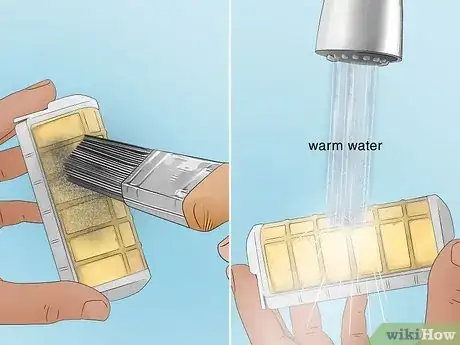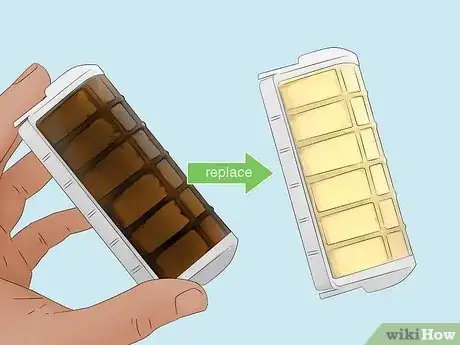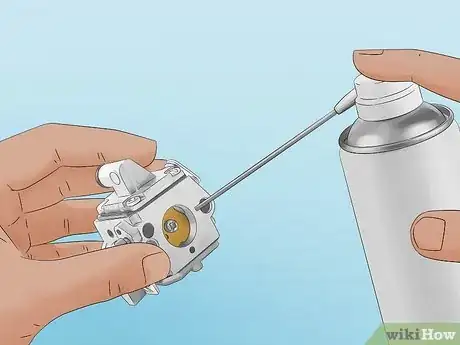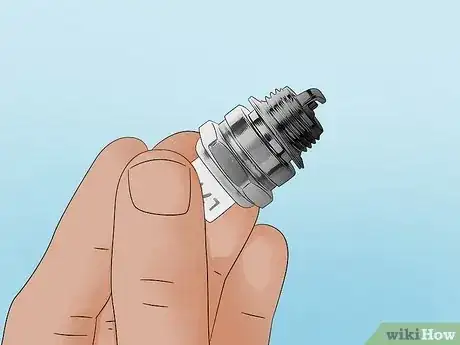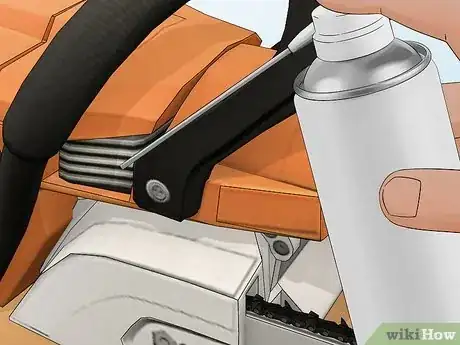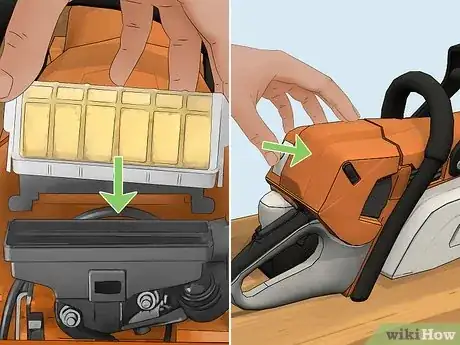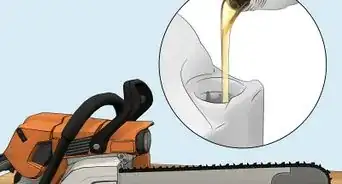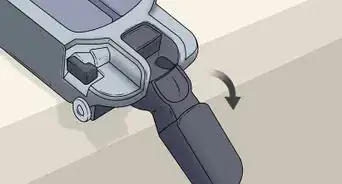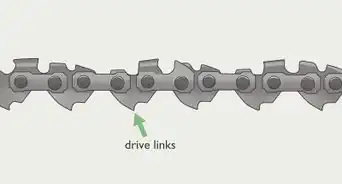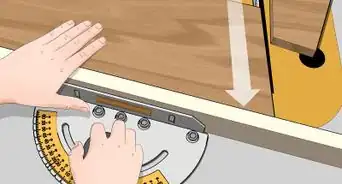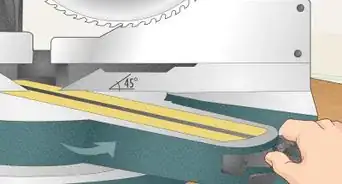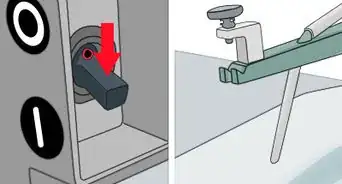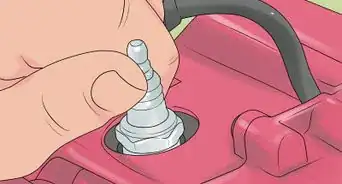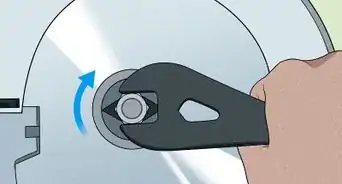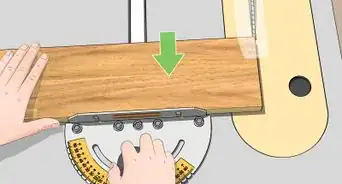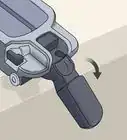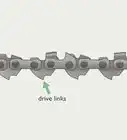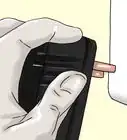This article was co-authored by wikiHow staff writer, Hunter Rising. Hunter Rising is a wikiHow Staff Writer based in Los Angeles. He has more than three years of experience writing for and working with wikiHow. Hunter holds a BFA in Entertainment Design from the University of Wisconsin - Stout and a Minor in English Writing.
There are 19 references cited in this article, which can be found at the bottom of the page.
This article has been viewed 41,355 times.
Learn more...
Is your chainsaw covered with sawdust, dirt, oil, or sap? All of the gunk built up on your saw can make your chainsaw less efficient, so it's important to give it a thorough clean to prevent unnecessary wear and tear. The good news is you can easily clean your chainsaw at home with just a few supplies. We'll cover everything you need to know about cleaning a chainsaw chain, guide bar, and the components on the body so it runs like new again!
Steps
Cleaning the Chain and Guide Bar
-
1Drain the fuel or disconnect the chainsaw from power. If you’re cleaning a gas-powered chainsaw, unscrew the fuel cap and pour whatever’s left of the fuel into a gas can. For an electric chainsaw, either unplug it from the outlet or take out the battery so there isn’t a risk of the saw turning on.[1]
- Try to use as much fuel as you can before you clean a gas-powered chainsaw so you don’t have as much to dump out.
-
2Clean your chainsaw on a stable workbench. Set the saw with the base flat against the table and ensure that the chain isn’t touching anything. Make sure the chainsaw barely moves or rocks around so it’s easier to work on.[2]
- Set a towel on your work surface if you need help keeping your chainsaw steady.
Advertisement -
3Unscrew the side cover to expose the base of the guide bar and chain. The side cover is the removable panel at the base of the chainsaw’s guide bar. If the side cover has a large circular dial, flip the lever and just unscrew it by hand to loosen the cover. If you see 2 nuts holding the cover in place, use a wrench to loosen them until the cover comes off.[3]
-
4Remove the chain and guide bar from the saw. Look for the chain adjusting screw or dial underneath the side cover and turn it counterclockwise to loosen the tension. Now that it’s loose, you can easily shift the guide bar and chain to pull it off of your saw.[4]
- Wear thick work gloves before you handle the chain since it’s sharp.
-
5Brush the inside of the side cover with a soft-bristled paintbrush. There’s probably a lot of built-up sawdust and other debris on the area inside the cover. Take your paintbrush and gently brush the debris out into the trash. Be sure to focus on all of the small nooks and crannies where the sawdust sticks.[5]
- If you’ve got stubborn residue or can’t reach sawdust with your brush, then try using compressed air to blow it out.
-
6Clean the groove on the guide bar with a putty knife. Sawdust and sap can build up in the groove where the chain sits on your guide bar. Stick the end of a putty knife into the groove and carefully scrape out all of the residue that’s stuck inside. Work all the way around the guide bar until it’s completely clean.[6]
- You can instead use a thin screwdriver if you don’t have a putty knife.
- If your chainsaw’s guide bar is sticky with sap or dirt, wipe it with a rag damp with soapy water or spray it with a degreaser.
-
7Soak the chain in an ammonia and water solution for 10-20 minutes. Combine 1 gallon (3.8 L) of water with 1 cup (240 ml) of household ammonia in a large bucket. Completely submerge the chain in your cleaning solution so the ammonia can break down the grease and residue that’s built up on the chain.[7]
- If your chainsaw is really gunked up, then use household lye instead of ammonia.[8] Lye can seriously irritate your skin, nose, and eyes, so wear gloves and safety glasses when you work with it.[9]
- Avoid mixing ammonia with other cleaners that contain bleach since it could create toxic fumes.
-
8Rinse the chain well with clean water and dry it off. Take your chain out of the cleaning solution and rinse it with either a garden hose or your sink faucet. Once you clean off all the solution from the chain, wipe it with paper towels to dry it off and clean any excess residue that was still left on the surface.[10]
- Leaving cleaning chemicals on your chainsaw chain could cause damage over time, so make sure you rinse them off thoroughly.
- If the cutting edges look dull, it may be time to sharpen the chain.
-
9Lubricate the chain in a plastic bag with chainsaw oil. Put the chainsaw chain in a resealable plastic bag and pour in enough chainsaw oil to completely submerge it. Keep the chain in the bag for a few hours or overnight so the oil can penetrate the chain. When you’re finished lubricating the chain, take it out and wipe off any excess oil with an old rag.[11]
- Keeping your chainsaw chain and bar lubricated is important to minimize wear and tear on your chain and extend the life of your chainsaw.
- Spraying a lubricant like WD40 on your chain may also work if you don’t have chainsaw oil.
-
10Reattach the guide bar and chain to your chainsaw. Fit the chain back into the groove on the guide bar. Then, loop the end of the chain near the base of the guide bar around the sprocket on the chainsaw’s body. After that, just put the side cover back in place and screw it back in to secure it.[12]
- If the chain hangs loose on the guide bar, readjust the chain tension with the adjustment screw before you use your saw.
Cleaning a Chainsaw Powerhead
-
1Wipe the outside of the chainsaw with soapy water. Wet a clean cloth with warm water and add a few drops of mild dish soap. Gently scrub any dirt or grime that’s stuck on the outside of the chainsaw’s body with your rag. Keep rewetting and wiping the chainsaw until the body looks completely clean.[13]
- If there are stubborn sticky spots, then spray a degreaser onto your cloth and work it into the grime to break it up.
-
2Take the top cover and air filter off of your chainsaw. Look for the cover at the top of the chainsaw’s body near the handle. Remove the cover by undoing the plastic clips or unscrewing any nuts with a wrench. The air filter is the plastic piece underneath the cover with a fabric piece to capture contaminants, and it will either easily pull out or have a plastic clip holding it down.[14]
- Only gas-powered chainsaws have air filters, so you don’t need to worry about cleaning one on an electric model.
- Stuff a rag into the port where the air filter was so no sawdust or contaminants get into the engine.
-
3Brush and wash the filter to clean dust and dirt. Use your soft-bristled paintbrush to clean off any loose dirt or debris that’s around the air filter. Once you clean up as much as you can, rinse the entire filter underneath warm water. Brush the filter again while it’s wet to clean off any other residue that was lifted up.[15]
- If the air filter looks extremely dirty even after you’ve cleaned it, you might need to buy a replacement filter.
-
4Remove and clean the carburetor with compressed air. The carburetor looks like a small metal box underneath the air filter on your chainsaw. Locate the nuts holding the carburetor on your saw and loosen them with your wrench. Carefully pull the carburetor out and spray it with short bursts of compressed air to blow away any sawdust in the compartment.[16]
- Be sure to spray your compressed air in the compartment on your saw where your carburetor was attached as well.
-
5Remove and inspect the spark plug. The spark plug is a cylindrical metal piece and it’s usually located right above the air filter on your chainsaw. Use a wrench to unscrew the spark plug from your chainsaw and pull it out. If it looks dark, discolored, or damaged, buy a replacement spark plug to install into your chainsaw.[17]
- When you replace your spark plug, make sure the gap between the L-shaped metal piece and the top of the spark plug is 0.026 inches (0.66 mm). Put the new spark plug in so the narrow end is pointing up and screw it in tightly.[18]
- Replacing an old spark plug is a lot easier than trying to clean it.
-
6Clean out the cooling fins with compressed air. The cooling fins are the vents on the sides of your chainsaw engine that help keep it cool while it’s running. Take a can of compressed air and spray it into the vents in short bursts to break apart any gunk or sawdust that was stuck in them.[19]
- You could break apart the gunk using a small screwdriver instead.
-
7Attach the air filter and put the top cover back on. Push the air filter back into the intake port until it clicks into place. Set the top cover on your chainsaw and screw it back on or clip it in so it’s firmly attached to the body. After that, you’re finished cleaning your saw.[20]
Warnings
- Avoid using ammonia with other cleaners or bleach since it could create toxic fumes.⧼thumbs_response⧽
Things You’ll Need
Cleaning the Chain and Guide Bar
- Gas can
- Wrench
- Work gloves
- Soft-bristled paintbrush
- Putty knife
- Ammonia
- Bucket
- Chainsaw oil
- Resealable plastic bag
Cleaning a Chainsaw Powerhead
References
- ↑ https://www.makita.ca/data/upload/owners_manuals/UC3551A,UC4051A%20-%20EN,%20FR,%20SP.pdf
- ↑ https://youtu.be/cACoANbiQG4?t=160
- ↑ https://www.chainsawsdirect.com/manuals/oregoncs250manual.pdf
- ↑ https://www.makita.ca/data/upload/owners_manuals/UC3551A,UC4051A%20-%20EN,%20FR,%20SP.pdf
- ↑ https://youtu.be/rZI8Miee1zk?t=35
- ↑ https://www.ctahr.hawaii.edu/oc/freepubs/pdf/res-092.pdf
- ↑ https://rurallivingtoday.com/rural-living/how-to-start-a-chainsaw/
- ↑ https://youtu.be/cACoANbiQG4?t=86
- ↑ https://beta-static.fishersci.com/content/dam/fishersci/en_US/documents/programs/education/regulatory-documents/sds/chemicals/chemicals-s/S25881.pdf
- ↑ https://youtu.be/cACoANbiQG4?t=168
- ↑ https://youtu.be/dt7fwYF4jI8?t=207
- ↑ https://youtu.be/1QXBGxfk44k?t=619
- ↑ https://www.chainsawsdirect.com/manuals/oregoncs250manual.pdf
- ↑ https://youtu.be/wozSufvtbfE?t=26
- ↑ https://www.ctahr.hawaii.edu/oc/freepubs/pdf/res-092.pdf
- ↑ https://youtu.be/aCAAknUvuIY?t=321
- ↑ https://youtu.be/hD8ixKr3WvA?t=33
- ↑ https://www.echo-usa.com/EchoUSA/files/e7/e7544d8b-7e45-43ee-94d9-f9f8e2d90270.pdf
- ↑ https://www.echo-usa.com/EchoUSA/files/e7/e7544d8b-7e45-43ee-94d9-f9f8e2d90270.pdf
- ↑ https://youtu.be/wozSufvtbfE?t=132
- ↑ https://www.chainsawsdirect.com/manuals/oregoncs250manual.pdf

